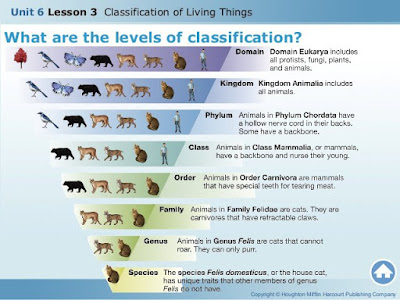6th Grade Science 5th SW Exam Review
1. What organelle(s) are found in plant cells that are
not found in animal cells?
2.
What organelle(s)
are found in animal cells that are not found in plant cells?
3.
What are the
three parts of the cell theory?
4.
Describe a prokaryotic
organism.
5.
Describe a
eukaryotic organism.
6.
How are
eukaryotic cells different from prokaryotic cells?
7.
Review: Functions
of all organelles found inside eukaryotic cells.
8.
What are the
eight levels of classification in order from broadest to most specific?
9.
Which are the
three domains of the levels of classification? How do these domains differ?
10. Which two domains contain only prokaryotic organisms?
How do these two domains differ?
11. Name the scientists who contributed towards the
creation of the cell theory? What were each scientists contributions towards
the theory? (Men of The Cell Theory)
12. What is a dichotomous key? How does it work?
13. What is a branching diagram? How does it work?
















